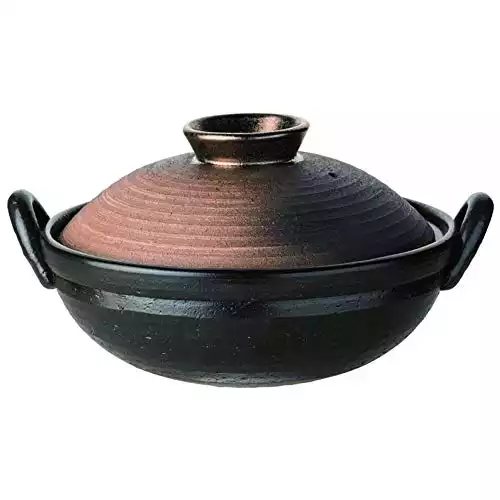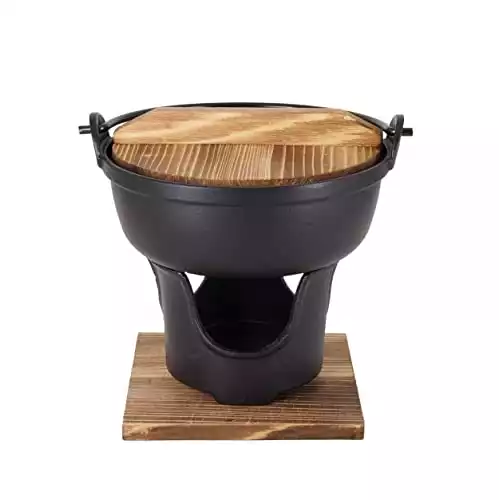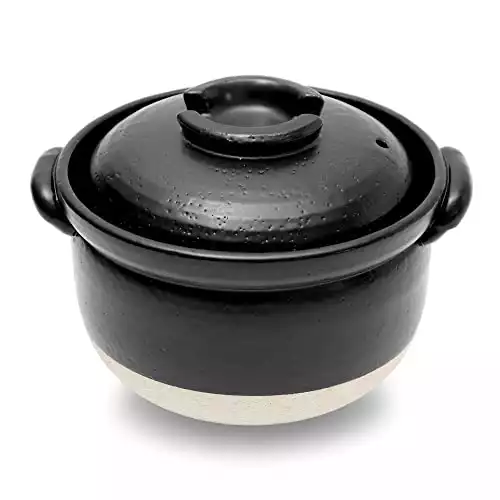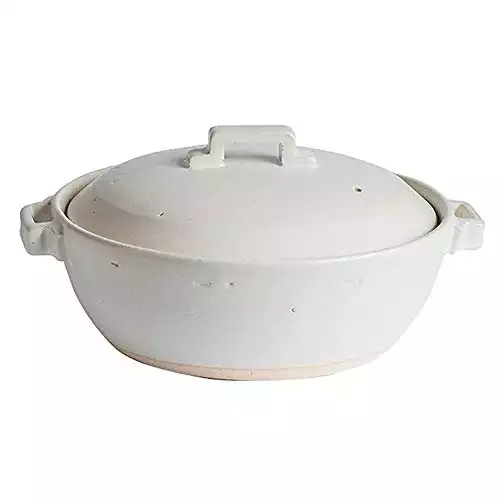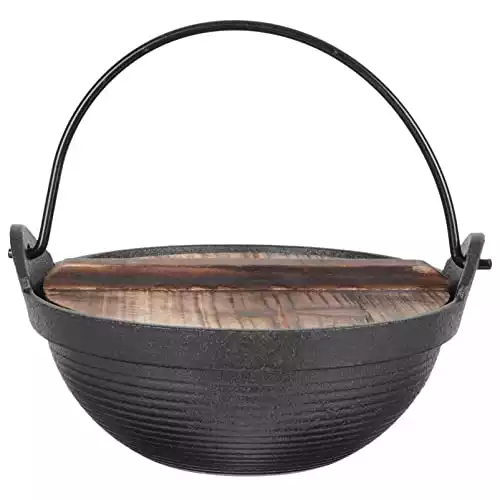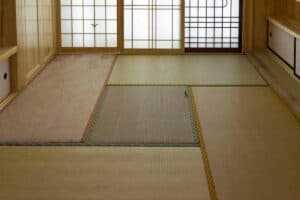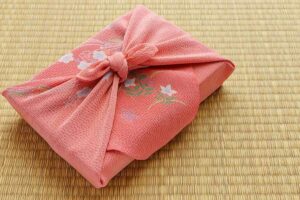Wowowow I have been drooling over the delicious banquets in a bowl called nabe (鍋物) that I’ve seen Aki over at Samurai Matcha eat in the cooler months of the year.
We all know that the Japanese know how to cook, but nabe hot pot dishes are the kind of warming food, made with the TLC that only momma can provide!
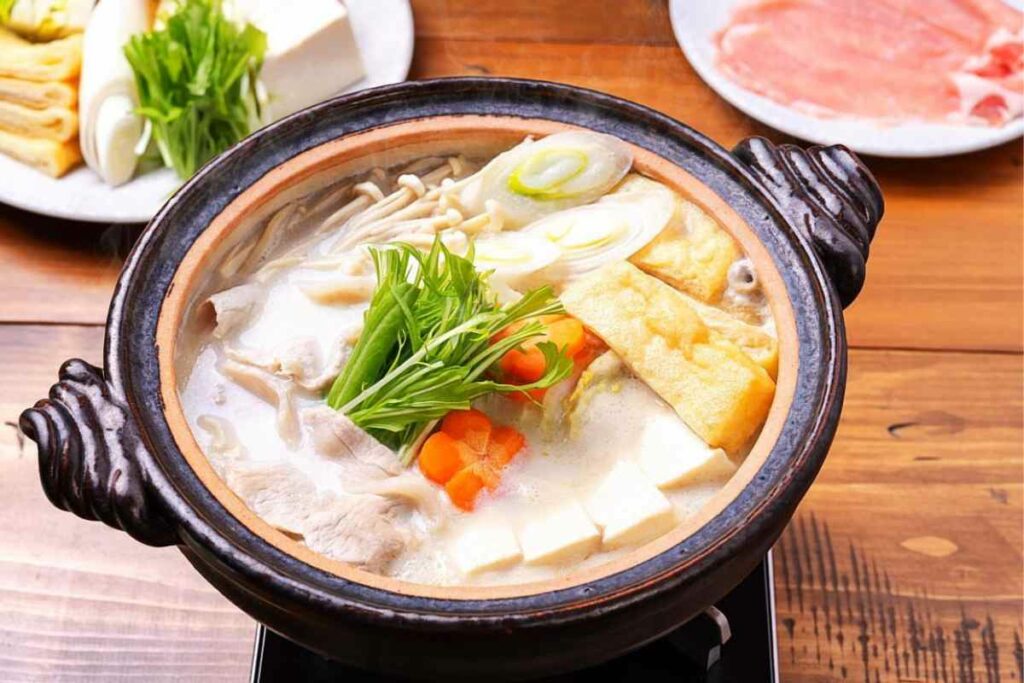
I’m a huge fan of all foods the come out of Japan but this style of food and cooking was new to me. so, I purchased a pot and I’m learning to cook using my new Nabe Hot Pot.
Learn the essentials of this traditional winter dish that has been enjoyed for centuries in Japan, so you can make some Japanese home cooking of your own!
Table of Contents
What is nabe?
Nabe, also known as nabemono (なべ物) are Japanese hot pot dishes.
The name literally means “hot pot” + “thing” and spans infinite combinations of good things prepared in a simmering pot of broth, cooked and served at the center of the table.
This autumn and winter favorite will feature heartwarming ingredients such as meat, seafood, vegetables, and tofu, which are added to the pot sequentially and cooked together:
Nabe is often enjoyed as a communal meal with diners gathering around the pot to cook and share the ingredients.
It is equally as popular as a complete meal for one as people can enjoy a one-pot dinner with any ingredients they want.
It is a popular dish in Japan, with many regional variations using different types of broth and ingredients. Once the piping hot pot is ready, the Japanese are creative with their garnishes, dipping sauces, or other condiments to add flavor to the cooked ingredients.
The History of Nabe
Nabe has been enjoyed for centuries. The word “nabe” refers to the traditional clay or iron pot used to cook dishes.
Nabe can be traced back to the 8th century when it was introduced to Japan by Buddhist monks from China. The monks would eat their simple meals of vegetables and tofu from a communal pot.
Over time, nabe evolved to include meat, seafood, and a variety of other ingredients. By the Edo period (1603-1868), nabe was mainstream and one of Japan’s most popular dishes.
The common people loved eating nabe during the winter months as they could gather around a hot pot to stay warm and enjoy a hearty meal with family and friends.
Nabe has remained popular to the present day. It is incredibly accessible and has been a hit in other countries like the US.
Essential Ingredients for Nabe
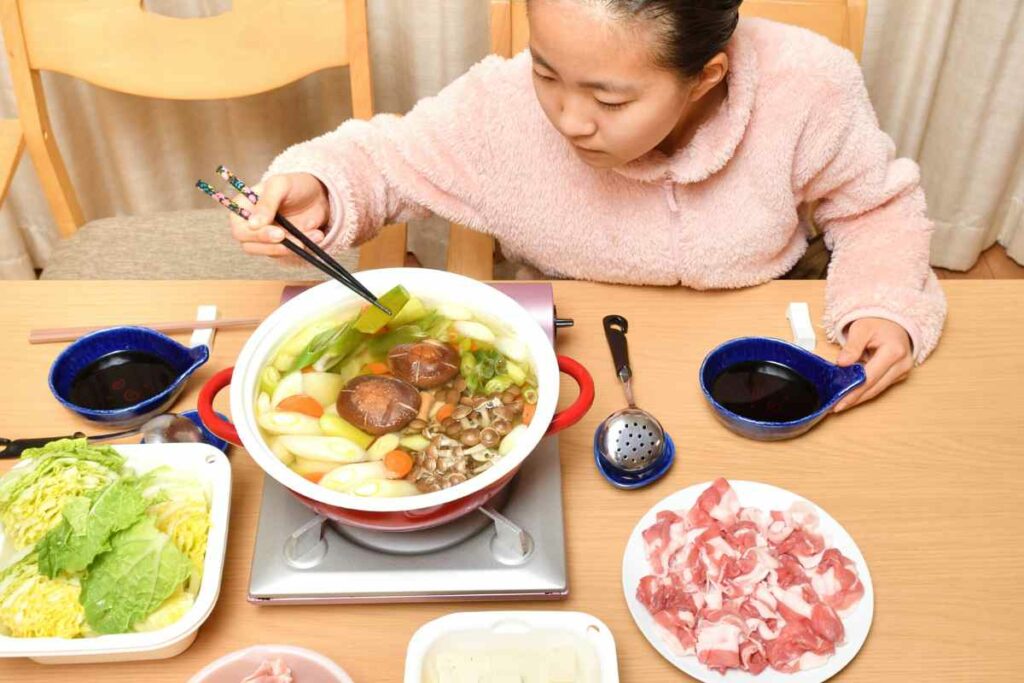
Nabe is designed to be a complete, nutritionally balanced meal.
It’s low in calories, hydrating, boosts immunity, and promotes socialization which is beneficial for health.
To make a delicious hot pot, the Japanese ensure they include the following major food groups in every pot:
- Proteins: These are the core of the nabe meal and usually include:
- Thinly sliced meats such as beef, pork, and chicken
- Seafood such as shrimp, scallops, and clams
- Tofu and tempeh are great sources of protein.
- Vegetables: A variety of fresh, in-season vegetables can be used in nabe. Favorites include:
- Leafy greens such as spinach and bok choy
- Root vegetables such as carrots and daikon radishes
- Mushrooms such as shiitake and enoki.
- Broths: The broth is the foundation of the nabe and determines the flavor of the hot pot. Types of broths that are commonly used in nabe, include dashi, miso, and chicken broth.
- Noodles: These add bite and hearty texture to your hot pot. The most common types of noodles are used such as udon noodles, soba, and ramen noodles.
- Extras: You can make your nabe extra-special with the addition of goodies like fish cakes, dumplings, chicken or pork balls.
Types of Nabe
There are four types of nabe that are commonly eaten in the autumn and winter months of the year.
The care cooked in a variety of rustic iron and clay pots over a fire or at the table on a single hob ring.
Sukiyaki
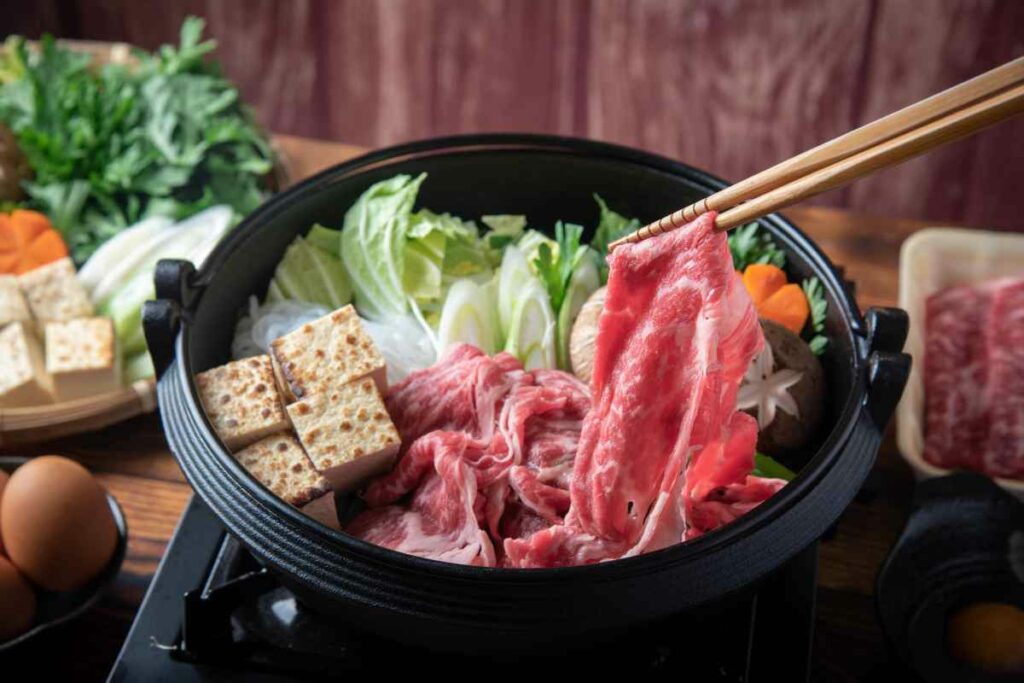
Sukiyaki nabe is a dish of thinly sliced beef, vegetables, and tofu, which are cooked in a sweet and savory broth made from soy sauce, sugar, and mirin.
The dish is cooked in a shallow iron pot. Once cooked the food is dipped in raw egg before being eaten.
Shabu Shabu
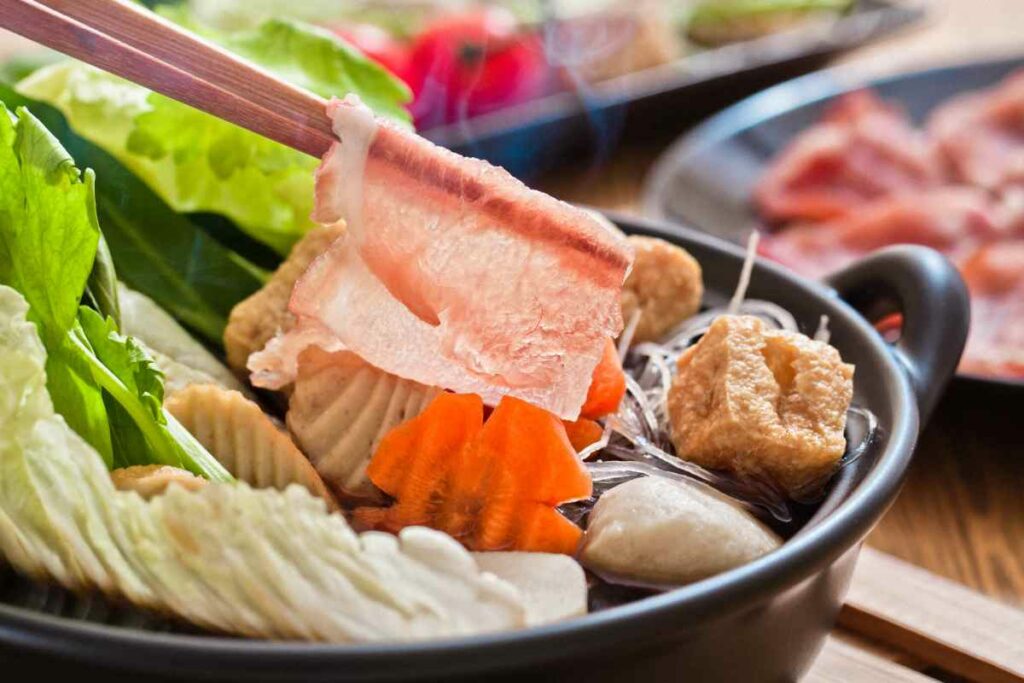
Shabu Shabu is a healthy and low-calorie dish that is similar to sukiyaki. It is cooked in a hot pot filled with boiling water or dashi broth.
Thinly sliced beef, vegetables, and tofu are cooked in the broth and then dipped in a ponzu or sesame sauce before being eaten:
Chanko Nabe
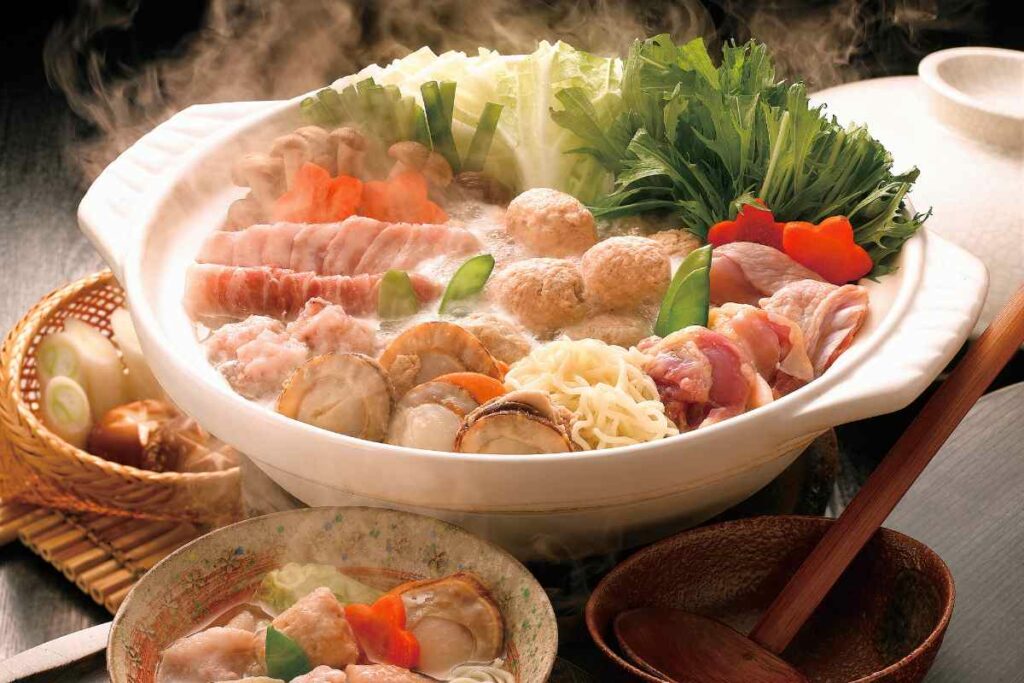
Chanko Nabe is a particularly rich nabe that is popular among sumo wrestlers in Japan for gaining weight and building muscle. It is made with ingredients, such as chicken, fish, vegetables, and tofu, in a large pot.
Kimchi Nabe
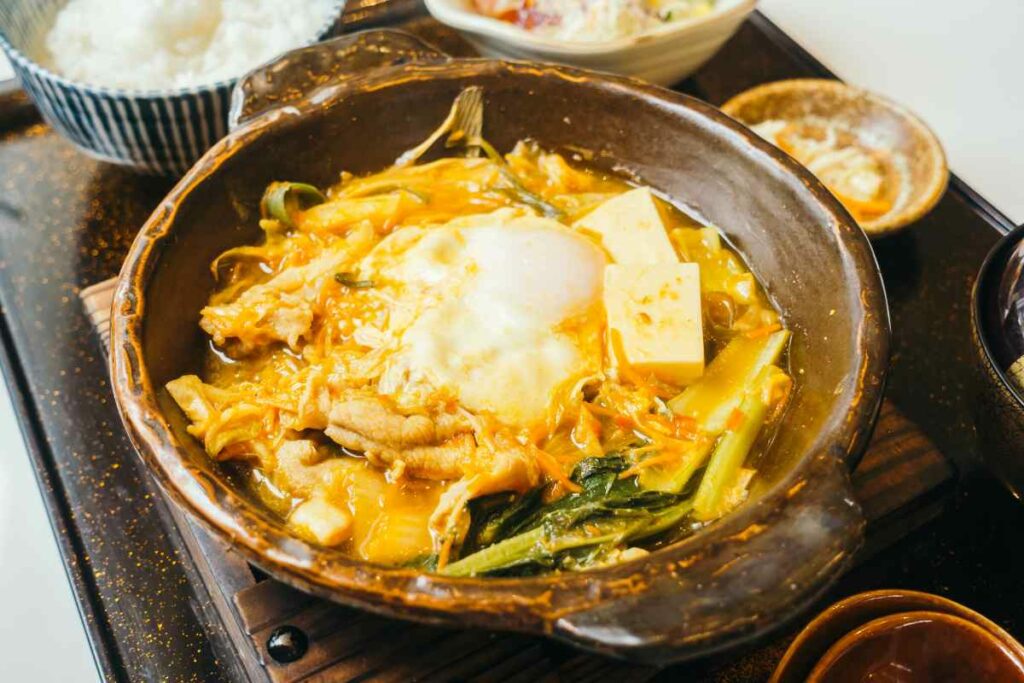
Kimchi Nabe is a Korean-style nabe that is made with kimchi, a spicy fermented vegetable dish. The nabe is typically cooked with pork or beef, tofu, and a variety of vegetables, such as mushrooms, onions, and garlic.
How to Prepare Nabe
With the right ingredients and a good pot, preparing nabe is easy and makes a great social occasion.
Here are some basic steps to follow when preparing nabe:
- Choose a pot: Select a pot that is large enough to hold all the ingredients you plan to use. A nabe pot with a lid is recommended to keep the heat in and cook the ingredients evenly. You can find a great nabe pot you’ll want to use again and again in my article: “The Best Nabe (Hot Pot) Pots Revealed”
- Prepare the broth: The broth is the base of the nabe and can be made from a variety of ingredients such as dashi, miso, or soy sauce. Add the broth to the pot and bring it to a boil.
- Add the ingredients: Once the broth is boiling, add your ingredients. It is recommended to add the ingredients in stages, starting with the ones that take longer to cook. Vegetables such as cabbage, carrots, and mushrooms can be added first, followed by meat and seafood.
- Cook the ingredients: Let the ingredients cook in the broth until they are fully cooked. This is surprisingly quick, so keep an eye on your pot!
- Time to eat: Once the ingredients are fully cooked, turn off the heat and serve the nabe. Each person can take ingredients they want from the pot and dips them in a sauce of their choice.
Enjoying Your Nabe With Friends
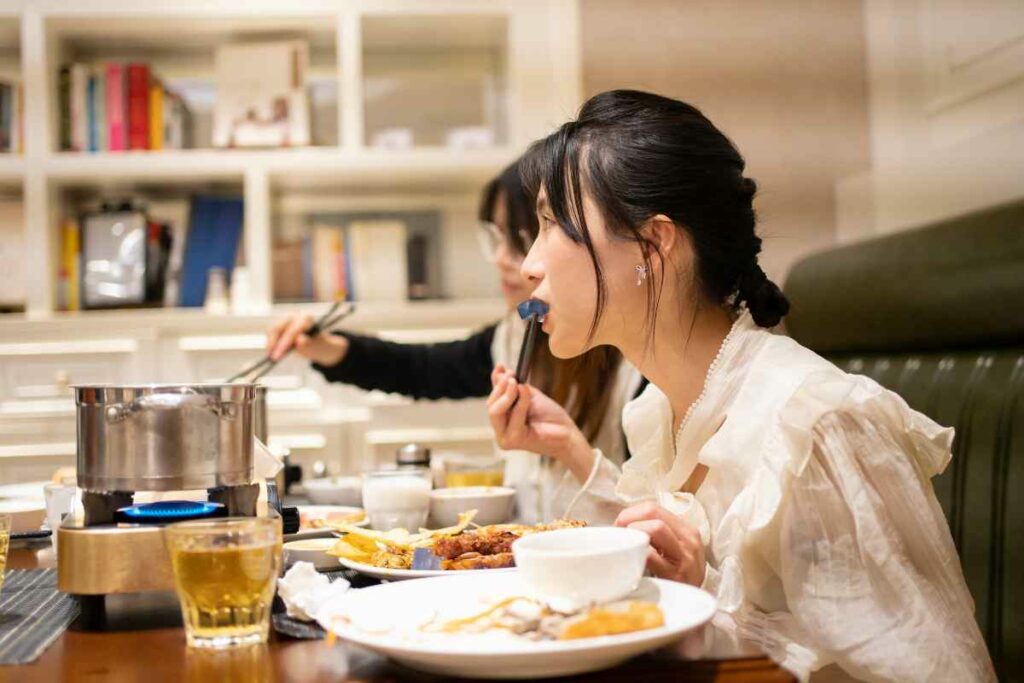
Nabe Etiquette
As with many aspects of Japanese culture and social interaction. Etiquette is key. Use chopsticks or a ladle to take food out of the pot, rather than using your hands, which is considered unsanitary.
Also, wait for everyone to have their fair share before going back for seconds. This ensures that everyone gets enough to eat and avoids awkwardness and tension at the table.
Pairings
Nabe is the perfect partner to a cold beverage or sake, that really balances the richness of the nabe. Green tea is also astringent, cleansing the palate from the intense flavors of the hot pot.
The Japanese also relish eating nabe ingredients with a variety of dipping sauces, such as ponzu sauce or sesame sauce, which add an extra layer of flavor and complexity to the dish.
Conclusion and final thoughts 💭
Nabe needs to be on your agenda for getting through the winter months. Enjoying nabe is all about taking your time, savoring the flavors, and sharing the experience with others.
It is great that nabe is a versatile dish that can be customized to suit different tastes and preferences.
By following these simple tips and guidelines, anyone can enjoy a delicious and memorable nabe meal.
- 7 Best Japanese Sunscreen Products You Can Buy Online
- 5 Best Japanese Makeup Brushes for a Flawless Finish
- 7 Benefits Of Tatami Mats You Should Know
- The Best Furoshiki Wrapping Cloths: Inspiration, Ideas & Cloths You Can Buy
- Cool Tenugui Towels (10 Best Ones with Bold Japanese designs)
- Japanese Yukata Ideas & Inspiration (20 Creative Ideas)

